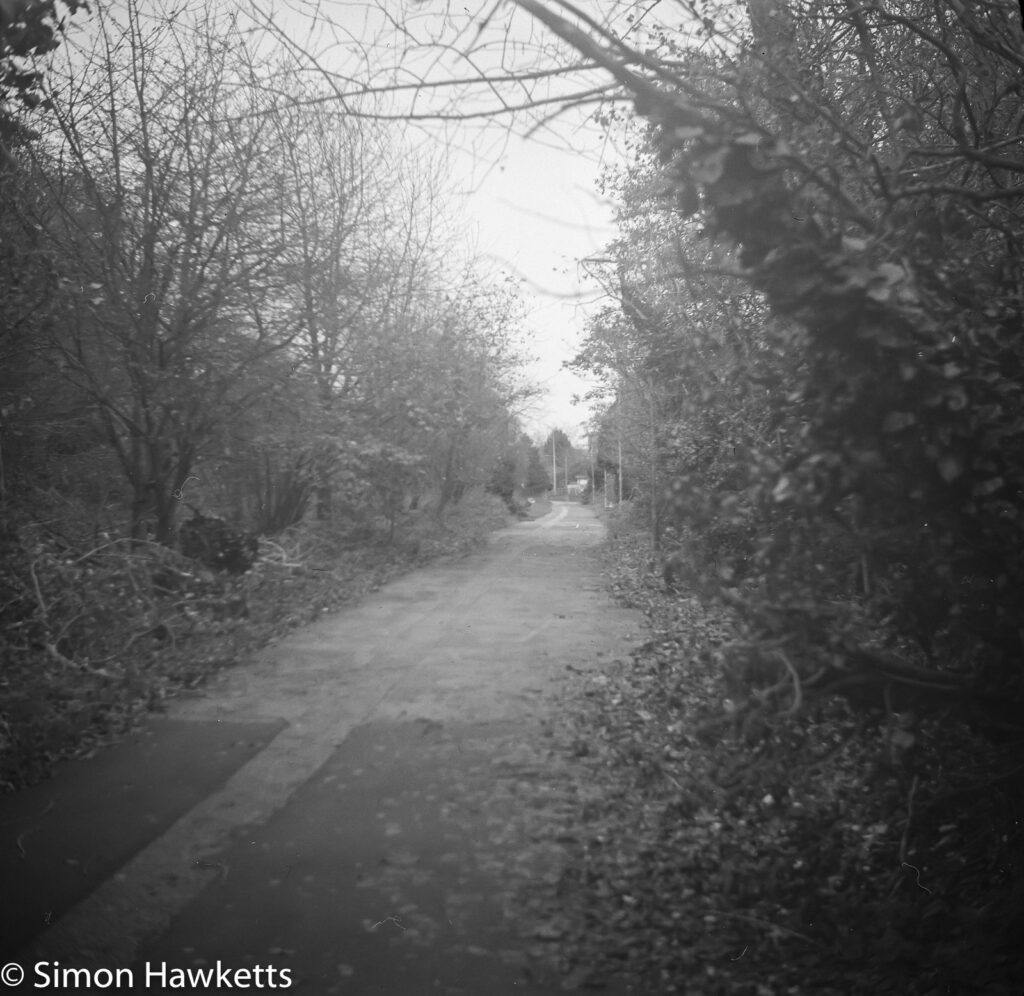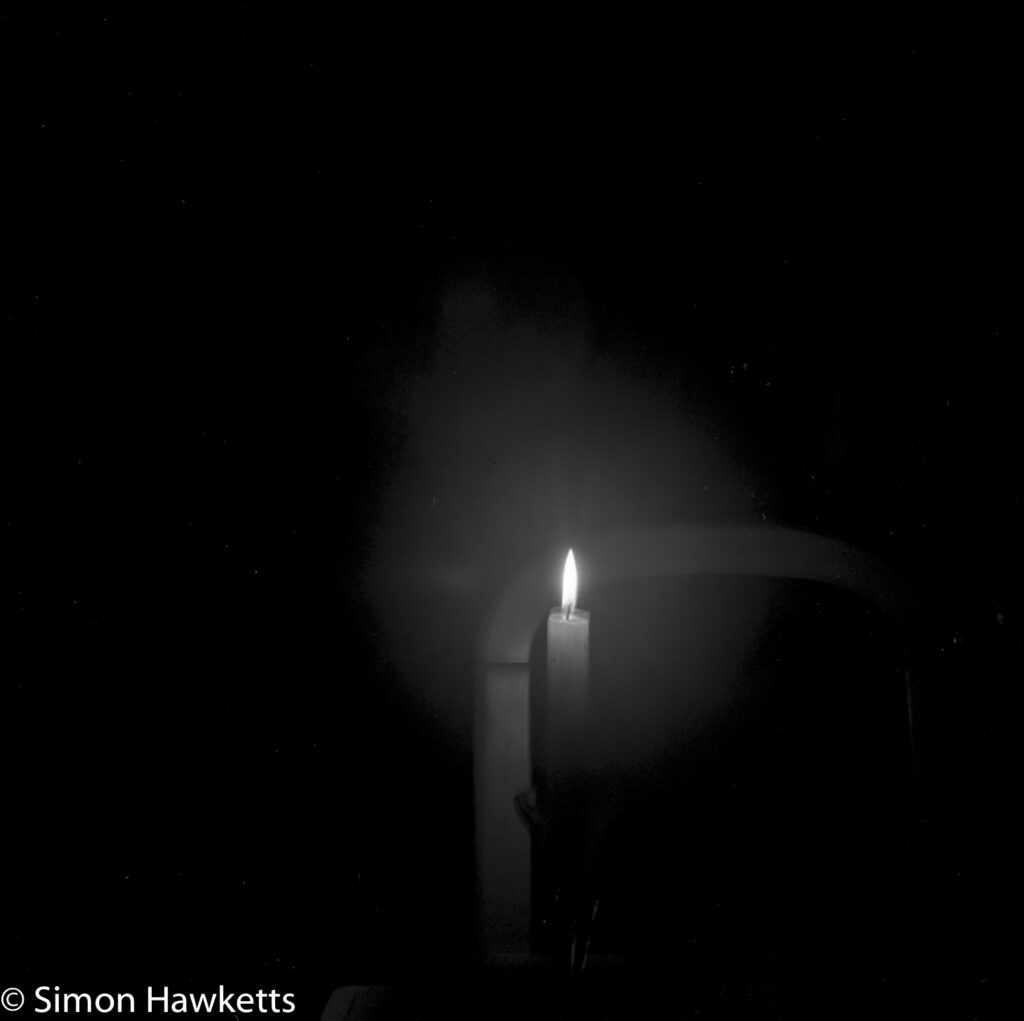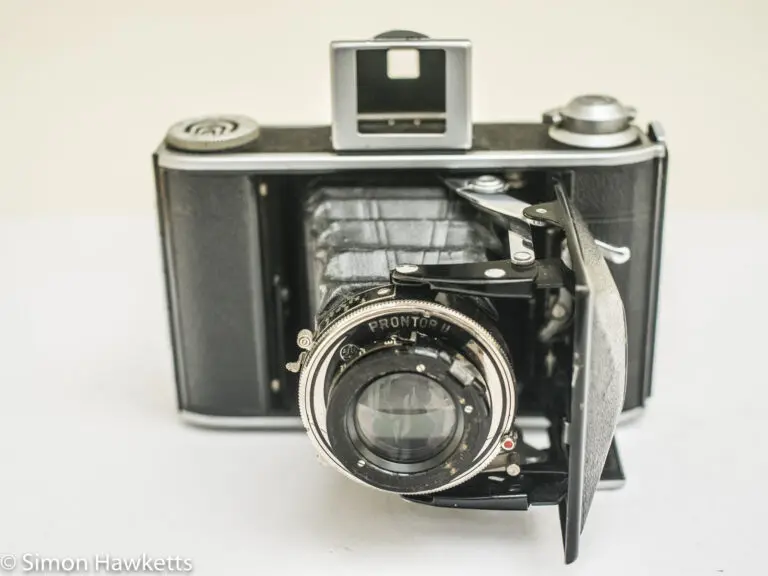Voigtlander Bessa 66 sample pictures
Over the last few weeks I’ve been carrying my Voigtlander Bessa 66 folding camera with me loaded with a reel of Ilford HP5+ in order to test how the camera performs. Being a very old camera (made sometime between 1938 and 1941) it’s always possible that there is a leak in the bellows, a problem with the lens or some other issue and there may be nothing on the negatives at all, but that moment of extracting the developed film out of the tank is one of the main thrills of trying out old cameras.
I found the Bessa 66 easy to carry around because it’s quite a small camera for the size of negative it produces, slips easily into the coat pocket and is quite quick to open and unfold. The viewfinder was a bit hit-and-miss because it’s just a frame, but the shutter release, being part of the lens cover, was very easy to use and fell in just the right place.
I have a bit more experience with a folding camera since my last test film in my Selfix 1620, so I found the process of remembering to set the exposure, cock the shutter & set the focus a bit easier, but I still found after processing the film that a couple of shots were completely under exposed, so I have a bit more learning to do on that score.
Film Development
After I’d completed the roll I loaded up my Patterson System 3 tank and developed the film in Ilford ID11 developer at a dilution of 1:1 for 12 minutes @ 20 °C and fixed the film for 6 min in a fresh mix of Ilford Rapid fixer at 1:4. After the final wash I tried wiping the excess water off with my fingers acting as a film squeegee; someone on the vintage film group on Facebook recommended this as a way to avoid drying marks and I think it was successful because there were fewer marks on this film than the last I developed.
The only remarkable event in the development was that for some reason it was a real pain loading the tank, with the film buckling and refusing to fit within the guides – I think it’s time I bought a more modern tank.
Once the film was washed and dried I cut it into 4 strips of 3 negatives and scanned them on an Epson V550 perfection scanner in 48 bit depth as black and white negatives. I turned off all the automatic features that the Epson software offers and imported the tiff format scans into Lightroom for post-processing.
During post-processing, I did a bit of clean-up of some dust spots (particularly on the first scan because I forgot to clean the scanner glass 🙁 ), and added some contrast, clarity and a bit of noise reduction and sharpening.
Voigtlander Bessa 66 sample pictures
The results of my test roll are shown below.
Overall they reveal the Bessa 66 to be a snapshot camera rather than a serious photographic tool, but I suppose that is no big surprise. Although my initial reaction to the scans was one of disappointment, especially regarding the amount of vignetting displayed, on reflection they are really what I should have expected. At the time this camera was sold, most photographs were contact prints and therefore the cameras didn’t need to have lenses capable of huge amounts of resolving power or contrast. Looked at them in this light, the pictures below are reasonable quality snaps.










Discover more from Everything Vintage
Subscribe to get the latest posts sent to your email.




